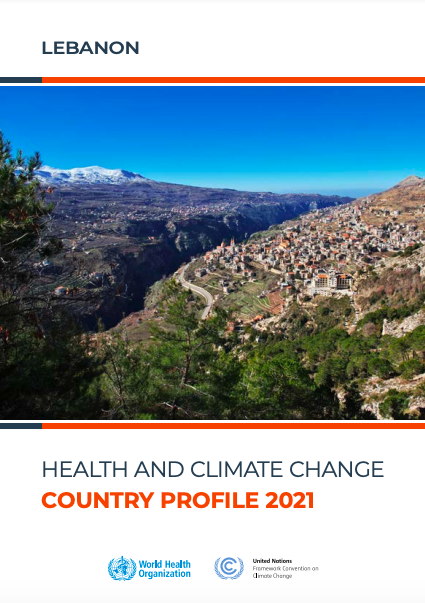Located on the eastern shore of the Mediterranean Sea, Lebanon’s territory is mostly mountainous with a land area of 10 452 km2 and a coastline of 225 km (1). The economy is dependent upon the service sector, which contributes 45% of the national GDP (2). While the agricultural sector accounts for only around 5% of GDP, agriculture has been impacted by higher world food prices and climate change, which could have significant implications for food security in Lebanon (2,3). Around 90% of Lebanon’s population lives in urban areas, especially in the big cities along the coast (1).
Lebanon’s climate is predominantly Mediterranean, with hot and dry summers from June to September and cool and rainy winters from December to March (1). Due to arid and semi-arid conditions, water resources are scarce and vulnerable to the effects of climate change and consequential changes in precipitation patterns (4). This threatens the agricultural sector, which is also pressured by population growth and urbanization (5). Further, climate change is expected to result in less snow, increased droughts, sea level rise and forest fires. Higher temperatures and frequent extreme events, such as droughts and floods, could lead to health risks such as infectious diseases, increased morbidity and mortality from heat stress, waterborne and vector-borne diseases (1). Encroaching seas are projected to expand seawater incursions into coastal freshwater aquifers and reduce the supply of freshwater for local use. Additionally, higher storm surges could increase damage to low-lying infrastructure and communities, and higher temperatures and reductions in annual precipitation could result in a hotter and drier climate, potentially diminishing future supplies of surface water.
Lebanon updated its Nationally Determined Contribution (NDC) in 2020, increasing its previous mitigation ambitions. The NDC commits unconditionally to reducing its greenhouse gas emissions by 20%, compared with the business-as-usual scenario, by 2030. Climate change is recognized as a threat multiplier in the NDC, which outlines numerous adaptation strategies, including implementing climate-resilient systems to ensure and protect public health, well-being and safety of all communities in Lebanon (4).










